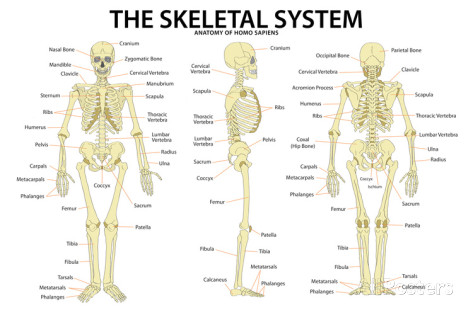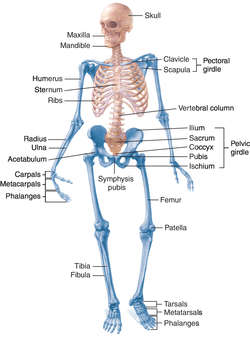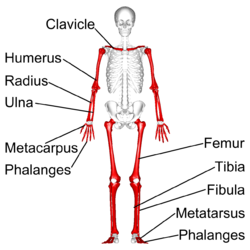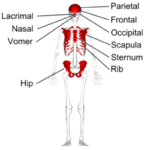There are 206 bones in the body, but not all are major bones involved in movement. The major bones involved in movement (from the head down) include:
- Skull (group of bones)
- Mandible
- Vertebral column
- cervical
- thoracic
- lumbar
- sacral
- coccyx
- Clavicle
- Scapula
- Sternum
- Costals (ribs)
- Humerous
- Radius
- Ulna
- Carpals (group of bones)
- Meta-Carpals
- Phalanges (1)
- Pelvic Girdle or Pelvis (group of bones)
- Femur
- Patella
- Tibia
- Fibula
- Tarsals (group of bones)
- Meta-tarsals
- Phalanges (2)
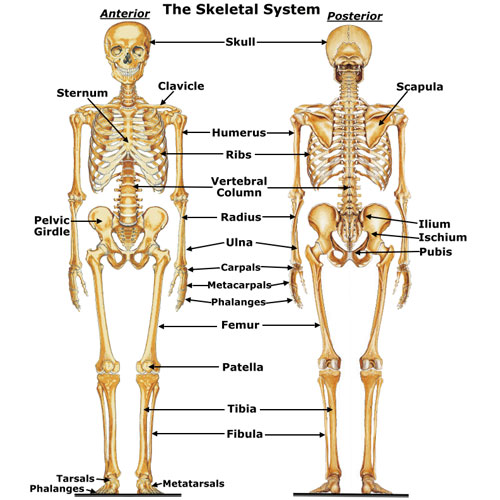
Each of these bones join to at least one other through a synovial joint (which you will learn more about next), which allows for movement. The major bones involved in movement are also each classified into a type/s of bone.
Long Bone
Long bones have the classical bone shape, and are narrow and long. By definition they must be longer than they are wide. Long bones are often the major bones involved in movement and also function to support weight. Examples of long bones include the:
Short bones
Short bones are roughly as wide as they are long and function to provide stability. They are one of the other major bones involved in movement, but only provide for limited movement. Examples of short bones include the: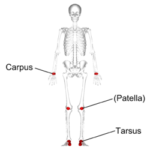
- Carpals
- Tarsals
- Patella
Flat bones
Late bones have a flattened surface and function to act as a shield protecting vital organs in the body. They also exist at joints, where they provide the “base” for movement to occur from. Examples of flat bones include the:
Irregular bones
Irregular bones are classified as such because of their irregular shape, not fitting into any other category. Irregular bones are one of the types of major bones involved in movement. Often irregular bones provide very limited amounts of movement and often provide protection for vital organs. Examples of irregular bones include the: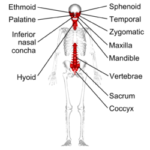
- Mandibule
- Vertebra
- Sacrum
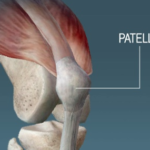 Sesamoid bone
Sesamoid bone
Sesamoid bones are embedded in tendons and help to protect the tendon from wear and tear. They are often found in the muscles of the hands and feet, however, the only one you need to know is the patella
Resources

